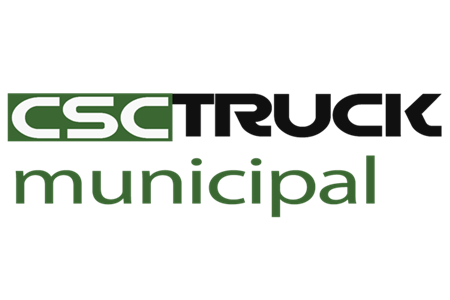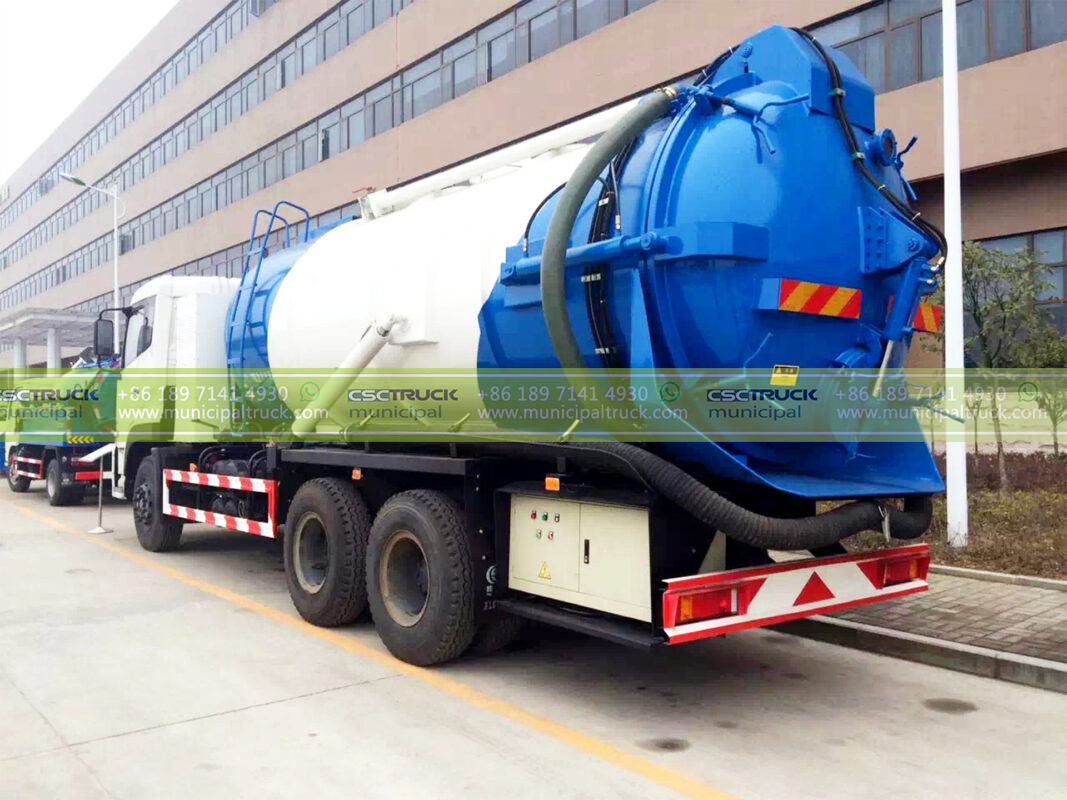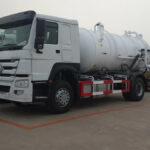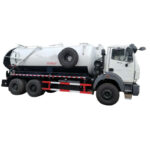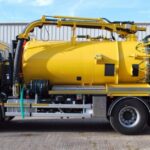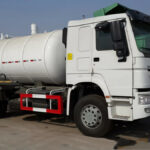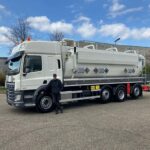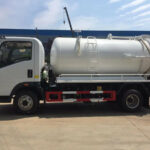Navigating the intricate and often stringent landscape of environmental regulations, particularly those enforced by the United States Environmental Protection Agency (EPA), presents a formidable challenge for municipalities and industrial operators managing wastewater sludge, industrial byproducts, and contaminated sediments; the journey from collection to final disposal is fraught with potential regulatory pitfalls where non-compliance can result in severe penalties, operational shutdowns, and lasting environmental damage. Within this high-stakes process, the modern sludge collector truck transcends its basic function of waste removal, evolving into a technologically advanced, compliance-focused asset engineered specifically to ensure that collected materials meet stringent EPA standards from the very moment they are extracted, safeguarding both the environment and the operator’s legal standing throughout the complex chain of custody.
The Regulatory Imperative: Understanding EPA’s Framework for Sludge Management
The EPA’s regulatory framework for sludge and biosolids is primarily governed by Title 40 of the Code of Federal Regulations (CFR), Part 503 – Standards for the Use or Disposal of Sewage Sludge. This comprehensive regulation, alongside rules under the Resource Conservation and Recovery Act (RCRA) for hazardous wastes and the Clean Water Act (CWA) for discharges, establishes rigorous requirements:
- Classification is Paramount: Material destined for collection must be accurately classified – is it domestic biosolids subject to Part 503, potentially hazardous waste under RCRA (triggering Subtitle C requirements), or non-hazardous industrial sludge? Misclassification at the source is a primary cause of downstream compliance failures and dictates the entire handling, transportation, and disposal pathway.
- Pollutant Ceilings and Pathogen Reduction: Part 503 sets strict limits on concentrations of heavy metals (e.g., arsenic, cadmium, mercury, lead) and mandates specific treatments to significantly reduce pathogens (disease-causing organisms) and vector attraction (reducing the potential to attract rodents and insects) before land application or surface disposal. Exceptional Quality (EQ) biosolids meet the highest standards for unrestricted use.
- Land Disposal Restrictions (LDR): For hazardous sludges, LDR rules prohibit land disposal unless the waste meets specific treatment standards designed to destroy or immobilize hazardous constituents, preventing groundwater contamination. Landfill disposal of non-hazardous sludge also requires meeting specific criteria to protect liner systems and leachate collection.
Engineering Compliance: How Modern Sludge Collectors Mitigate Risk at the Source
Contemporary sludge collector trucks are not merely transporters; they are sophisticated mobile treatment and containment units designed with compliance as a core engineering principle:
- Precision Vacuum Systems with Filtration: High-powered, positive displacement blowers generate immense suction, capable of handling thick, viscous sludges. Crucially, integrated multi-stage filtration systems – often involving cyclonic separators and high-efficiency particulate air (HEPA) or mist eliminator filters – capture hazardous aerosols, volatile organic compounds (VOCs), and fine particulate matter during loading. This prevents fugitive emissions at the collection site, a critical factor for air quality compliance and worker safety (OSHA regulations), and ensures only the intended material enters the tank.
- Containment Integrity: Tanks are constructed from corrosion-resistant materials (stainless steel, specialized polymers) compatible with a wide range of chemical sludges. Features include hermetically sealed manways, vacuum-rated construction to prevent implosion, and spill containment basins integrated around fill ports. Overfill prevention systems with audible/visual alarms and automatic pump cutoffs are mandatory, directly addressing SPCC (Spill Prevention, Control, and Countermeasure) and RCRA containment requirements.
- Material Segregation Capabilities: Trucks designed for multi-material handling may feature separate compartments or specialized tank baffling systems to prevent cross-contamination during collection. This is vital when collecting different waste streams that could react dangerously or when non-compliant material is identified and needs isolation.
Instrumentation & Real-Time Monitoring – The Data Advantage
Compliance hinges on accurate data. Advanced sludge collectors integrate sophisticated sensors and telematics:
- Onboard Weighing Systems: Integrated load cells provide real-time weight data, crucial for verifying manifest accuracy, calculating disposal fees, and ensuring trucks operate within safe Gross Vehicle Weight Ratings (GVWR). This data feeds directly into electronic record-keeping.
- Material Characterization Sensors: Emerging technologies include probes measuring pH, conductivity, and even basic chemical composition during loading. While not replacing lab analysis, this provides immediate field screening for gross deviations from expected parameters (e.g., detecting unexpected acidity hinting at hazardous contamination), allowing operators to halt collection and investigate.
- Telematics and Compliance Software: GPS tracking provides irrefutable chain-of-custody location data. Integrated software platforms manage electronic manifests, track driver certifications, schedule preventive maintenance critical for system integrity, and generate compliance reports, creating a seamless digital audit trail.
The Critical Role of Operator Training and Standard Procedures
Even the most advanced truck cannot ensure compliance without skilled personnel adhering to strict protocols:
- Material Acceptance Verification: Operators must be rigorously trained in waste profiling requirements. This involves verifying generator paperwork (e.g., waste manifests, lab analysis, treatment certifications) before accepting any load. Understanding prohibitive contaminants and recognizing visual/olfactory signs of non-conforming material (e.g., unexpected solvents, high temperature) is essential. “Cradle-to-grave” liability means the transporter shares responsibility for improper disposal.
- Safe and Compliant Loading Procedures: Training covers safe hose handling, connection protocols to prevent spills, correct use of filtration systems, monitoring gauges and alarms, and proper techniques for handling different sludge consistencies (thick vs. liquid). Emphasis is placed on spill response procedures and immediate reporting.
- Manifest System Mastery: Accurate completion of the EPA Uniform Hazardous Waste Manifest (for RCRA waste) or equivalent state/biosolids manifests is non-negotiable. Drivers must understand every section, ensure generator signatures, accurately record quantities and codes, and manage manifest copies throughout transit and final delivery to the Treatment, Storage, and Disposal Facility (TSDF) or land application site.
Navigating the Chain of Custody: From Collection to Final Receipt
The sludge collector truck is the physical nexus point in the chain-of-custody documentation. Ensuring seamless, compliant transfer is paramount:
- Accurate Manifesting: Every load collected must be meticulously documented on the appropriate manifest. This includes precise waste codes, generator information, transporter details, TSDF details, accurate quantity (weight/volume), and proper signatures at each transfer point. Electronic manifest systems (e-Manifest) are increasingly mandated, improving accuracy and traceability.
- Secure Transport: Material must be transported in a container (the truck’s tank) that prevents leaks, spills, and releases. Compliance includes adhering to DOT hazardous materials transportation regulations (if applicable, including placarding, driver training – HAZMAT endorsement) and routing requirements. Tamper-evident seals on tank openings may be required.
- Verification at Disposal: Upon arrival at the TSDF, landfill, or application site, facility personnel verify the manifest details against the load. The sludge collector truck‘s ability to provide a representative sample if requested (via dedicated sample ports) and the driver’s knowledge of the load’s history are crucial. Only after the receiving facility signs the manifest, accepting custody, is the transporter’s primary responsibility fulfilled, though record retention obligations persist.
Overcoming Compliance Challenges: Contamination, Rejects, and Cost Management
Real-world operations face hurdles that threaten compliance:
- Dealing with Contaminated Loads: Discovering prohibited waste (e.g., hazardous chemicals in municipal sludge, radioactive material) after loading creates a crisis. Protocols must exist for safe isolation, notification of authorities (EPA, state agencies), and coordination for compliant redirection to a permitted facility capable of handling it, often at significant cost. Pre-screening at generators is vital prevention.
- TSDF Rejections: Loads can be rejected at the disposal site for reasons like incorrect paperwork, suspected contamination exceeding facility permits, or failure to meet treatment standards. Having contingency plans and contracts with alternative facilities, and understanding the costly implications of returns or re-handling, is essential. Detailed waste profiling upfront minimizes this risk.
- Balancing Cost and Compliance: Investing in advanced sludge collector trucks with superior filtration, containment, and monitoring capabilities represents significant capital expenditure. However, this must be weighed against the astronomical costs of non-compliance – fines, legal fees, remediation costs, reputational damage, and potential liability for environmental harm. Preventive maintenance is also non-negotiable to avoid leaks or failures during transit.
The Future of Compliant Sludge Collection: Technology and Integration
Innovation continues to enhance compliance capabilities and efficiency:
- Enhanced Real-Time Analytics: Integration of more sophisticated onboard sensors for real-time detection of specific contaminants (e.g., heavy metals, VOCs, ammonia) using spectroscopy or electrochemical methods will provide immediate “go/no-go” decisions during loading, drastically reducing contamination risks.
- Automation and Robotics: Semi-automated hose handling systems and robotic arms for sampling could improve operator safety during loading and ensure more consistent, representative sample collection for verification.
- Advanced Telematics and AI: Predictive maintenance algorithms will minimize downtime and prevent compliance-threatening equipment failures. AI-powered route optimization will factor in real-time traffic, facility wait times, and even weather conditions impacting road stability or emission controls, ensuring timely, safe delivery while optimizing fuel use and reducing the carbon footprint of collection.
- Integration with Circular Economy Models: Trucks equipped to handle source-separated organic sludges more effectively could facilitate advanced anaerobic digestion or thermal conversion processes, transforming waste into renewable energy (biogas) or soil amendments, aligning with EPA’s emphasis on beneficial reuse and resource recovery under initiatives like the National Biosolids Data Project.
The efficient and legally sound management of accumulated waste streams, from municipal wastewater treatment basins to industrial settling ponds, relies heavily on the specialized capabilities of the modern sludge collector truck, a machine engineered to meet the exacting demands of environmental protection from the point of extraction. This critical function operates seamlessly alongside other essential fleet assets like the vacuum truck, adept at handling liquid waste from confined spaces, and the robust sewer cleaner truck, maintaining the vital flow of urban infrastructure. Together, these technologies form the backbone of compliant municipal and industrial waste handling, ensuring that the complex journey from source to final disposition adheres to every facet of the EPA’s protective regulations, safeguarding public health and environmental integrity for future generations. Their role is not merely operational but fundamentally regulatory, turning the challenge of waste disposal into a managed, documented, and compliant process.
